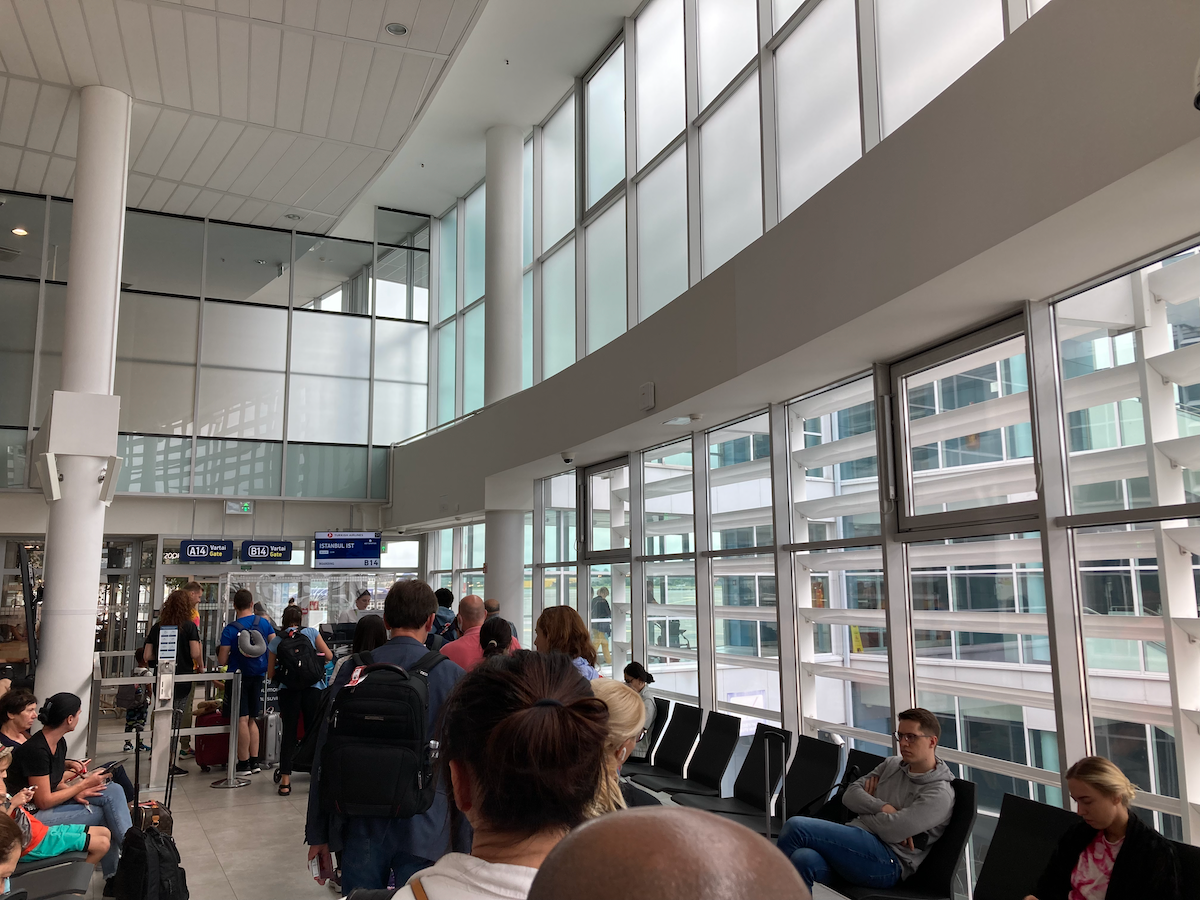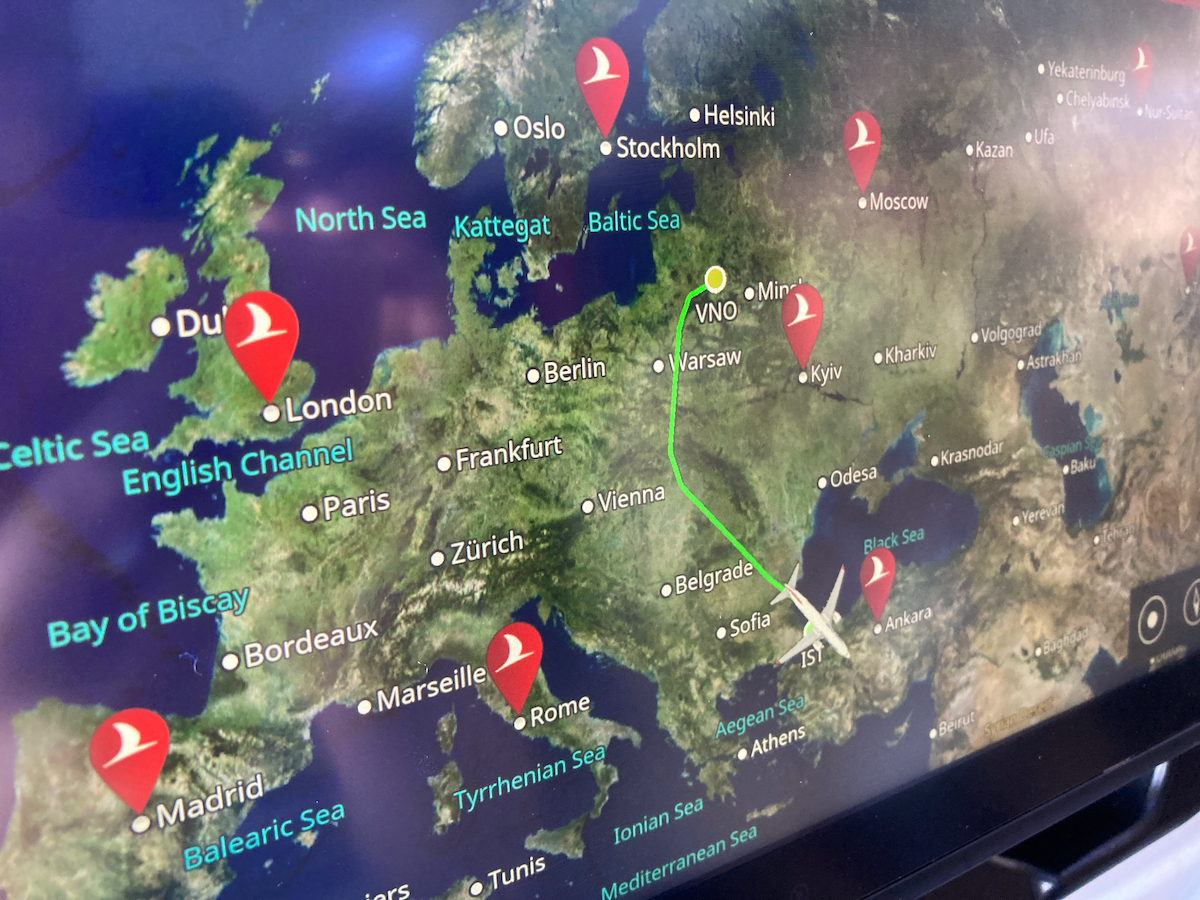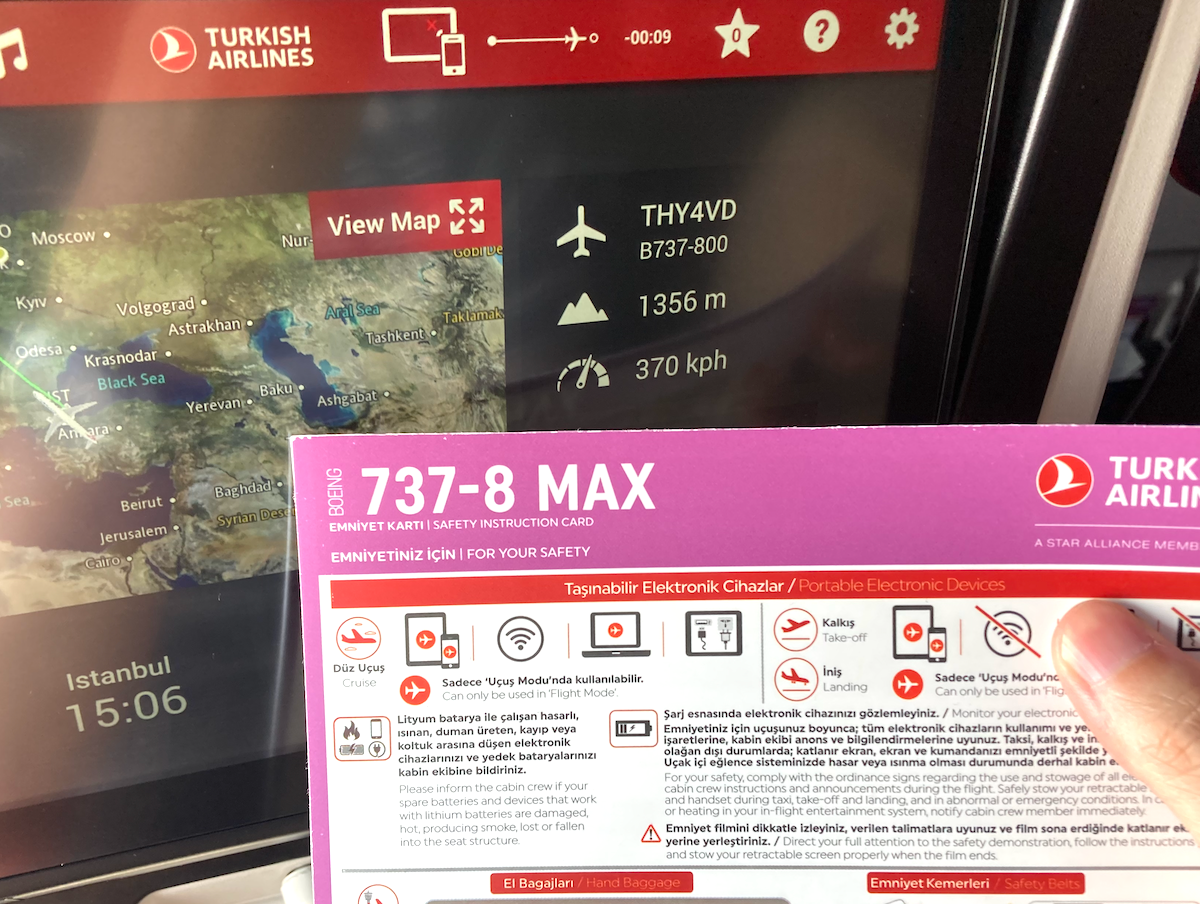Living in Vilnius, Lithuania has its pros and cons. While it's a beautiful city, one major downside is that the airport lacks any regularly scheduled long-haul services. As a result, Lithuania-based travelers will need to connect through another hub airport to access long-distance flights. One airline stepping in to fill the need is Turkish Airlines, which connects the world through its Istanbul hub. In this review, we will go over the economy class flight experience, traveling from Vilnius to Istanbul in a Boeing 737 MAX 8. So, let's get started.
Trip background and basics
This flight was taken on August 30th as flight TK1410. This is a service that is scheduled to depart Vilnius (VNO) at 12:30 and arrive at New Istanbul Airport (IST) at 15:35 (local time). Our full journey from Vilnius would take us to Bodrum with a connection in Istanbul. Pricing was fairly high, but given the origin and destination, few single-itinerary alternatives existed.
Turkish Airlines may operate up to two daily flights to Vilnius. But, regardless of frequency, the aircraft type connecting the two cities is always a Boeing 737. However, this may vary between a Boeing 737-800, -900ER, or MAX 8 (and presumably MAX 9). The aircraft at the center of this review was a Boeing 737 MAX 8 registered TC-LCU. Planespotters.net data indicates that this aircraft is one of the airline's newest MAX 8s, having been delivered in September 2021.
Everything before the aircraft
Arrival at Vilnius airport was quick and easy. It's a relatively small city when it comes to population, and its airport is relatively close to the city center. The airport is well-connected to the main bus and train stations via public buses, airport shuttle buses, an infrequent train service, taxis, and car sharing services. For those who don't mind a slightly longer and less comfortable journey by public transit, travelers can pay less than a euro to get to the airport. For us, living outside the city, we could have taken this option but decided to 'treat ourselves' to get there faster using an electric car sharing service.
We obtained our boarding passes the day before, as online check-in opened 24 hours prior to the flight. Without any checked baggage, we entered the airport terminal building and headed straight through to security. Passenger screening seemed fairly standard, requiring passengers to separate liquids and laptops from baggage. With just one checkpoint open, things seemed slow and inefficient but in reality, we were through security in less than 20 minutes.
With the country of Türkiye being outside the EU and Schengen zone, we had to clear passport control to get to our gate. At the time we arrived (significantly before our boarding time), there were no line-ups. However, another traveler was having some issues with paperwork and just preoccupied one border guard for much longer than usual.
Getting through passport control, we reached the few gates reserved for flights outside the EU. With most flights from Vilnius serving destinations within the Schengen area, this non-Schengen section was quite small. Indeed, you'll mainly see flights to London and Istanbul these days - particularly as flights to Moscow and Minsk no longer operate.
The departures area is similar to many modern airports, but on a much, much smaller scale. The terminal has high ceilings in most places. Large windows also let natural light flood in while at the same time offering great views of the apron. Vilnius airport has a few things to make travelers feel comfortable:
- WiFi is fast with limited registration
- Outside all or most toilet facilities there is a water fountain to fill water bottles
- There are a handful of cafes and restaurants offering the basics (although this is more limited in the non-Schengen section)
- iQOS lounges in Schengen and non-Schengen areas allow people to use their vape devices (although I'm not sure if cigarettes are allowed in these fully-contained rooms.
All in all, the airport is small but quite modern and comfortable for those on their way out.
The cabin and seat
Since I didn't check the particular aircraft beforehand, I only realized that I was about to take my first-ever flight on a 737 MAX after looking out the window of the terminal and seeing those distinct winglets. Having written for Simple Flying since 2019, the internal reaction was mixed: Knowing all the details about the 2018 and 2019 crashes caused a brief moment of anxiety. This, however, was countered by the fact that the aircraft has been in regular service around the world for over a year now, accumulating over a million safe flight hours.
Consciously reassuring myself on the safety of the type and trusting the revised regulatory process, my mind moved to the positive side: We were on a fairly new aircraft with a new and comfortable cabin.
Boarding was a relatively quick process taking place via jetbridge, and we took our seats at 23A and 23B. As someone who is about 180cm (just under six feet) tall, I had no issues with legroom. I like to travel with my laptop and accesories closeby at all times and so I had my somewhat large backpack under the seat in front of me. Although it certainly ate up most of my available legroom, the bag (a 30L Peak Design Everyday Backpack) fit under the seat without issue.
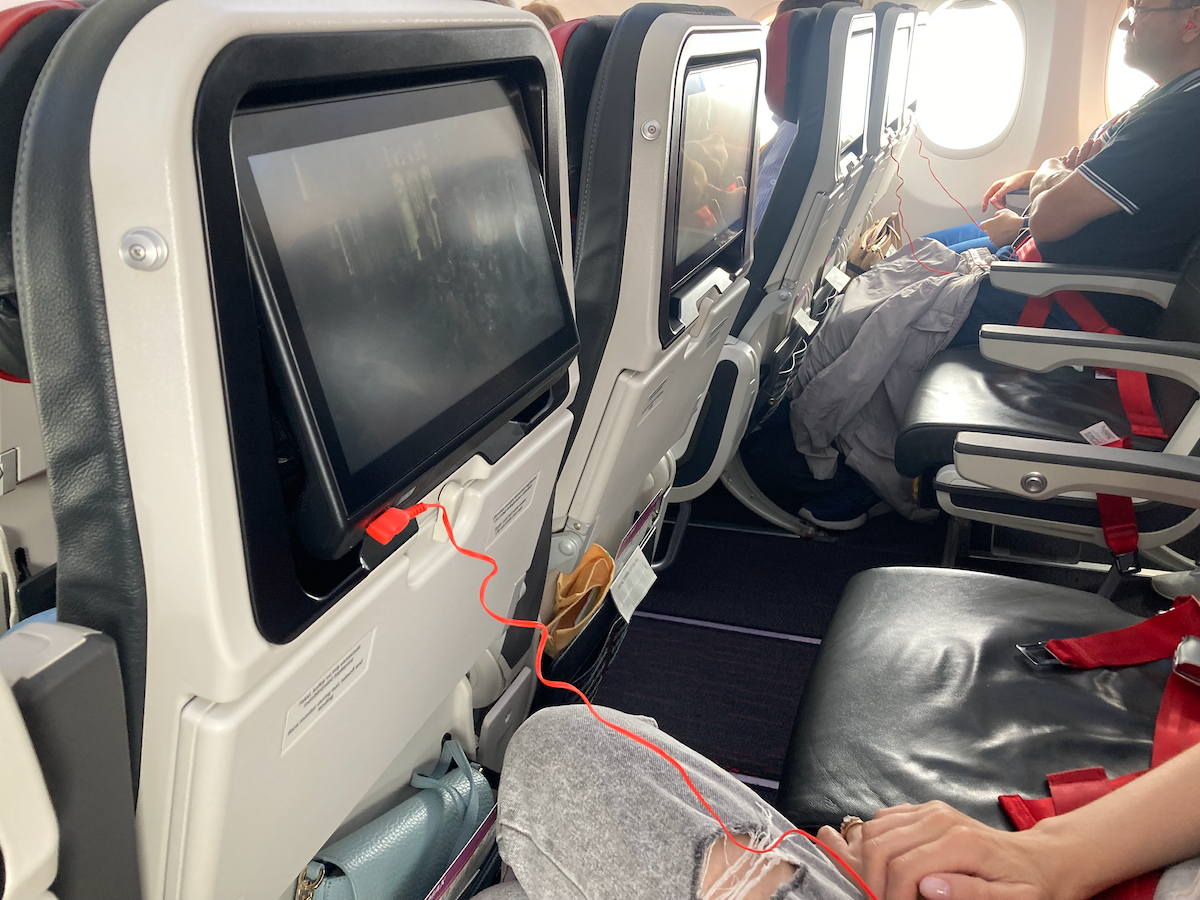
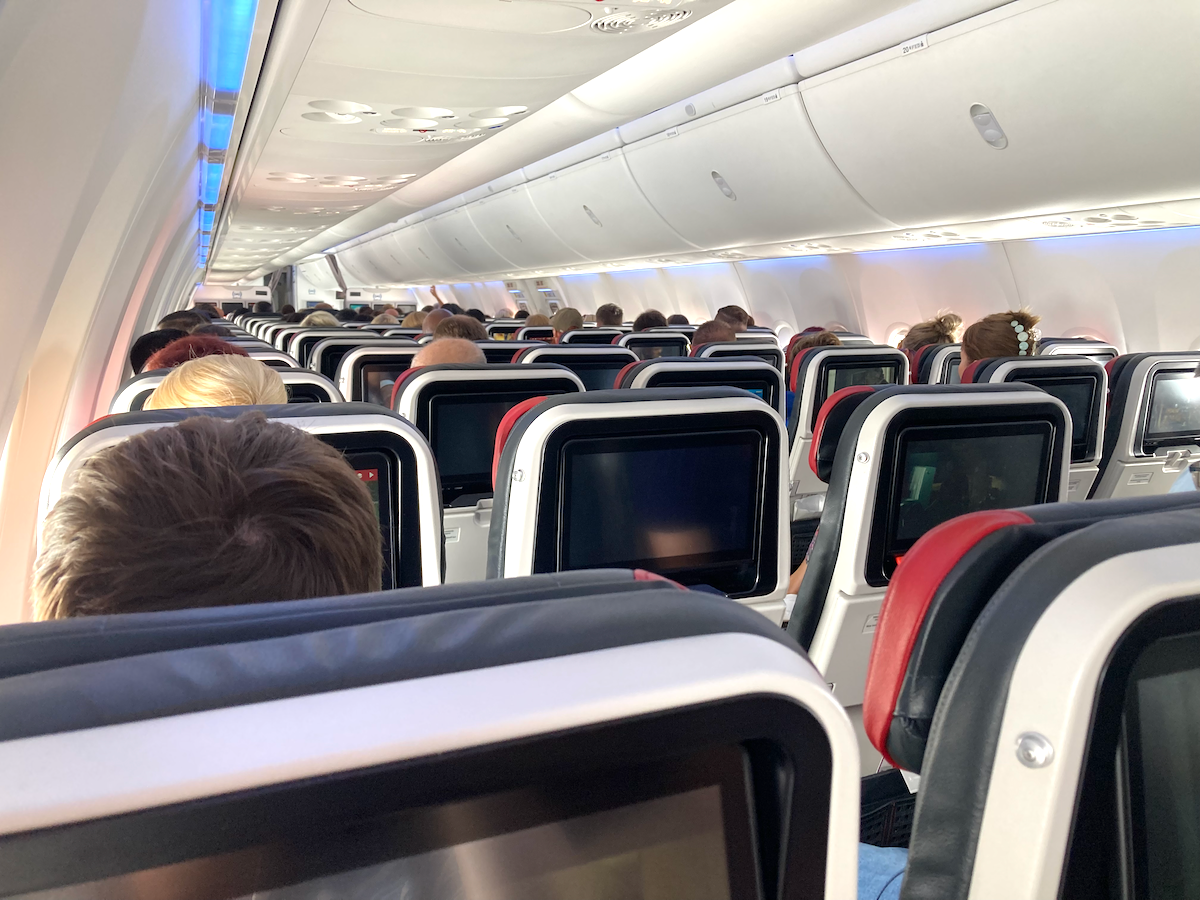
While the seats are somewhat slim, they were comfortable and fitted with highly-adjustable headrests. While unable to tilt, these headrests could slide up and down. The side "wings" of the headrests were adjustable to provide side additional side support. Some other small touches and features also worth mentioning include:
- Both large (main) and smaller seat-back pockets. The smaller pockets were a nice touch, allowing easy access and storage of phones.
- A small metal 'nub' on the side of the forward seat meant for hanging coats and other clothing
- And a fairly standard amount of recline
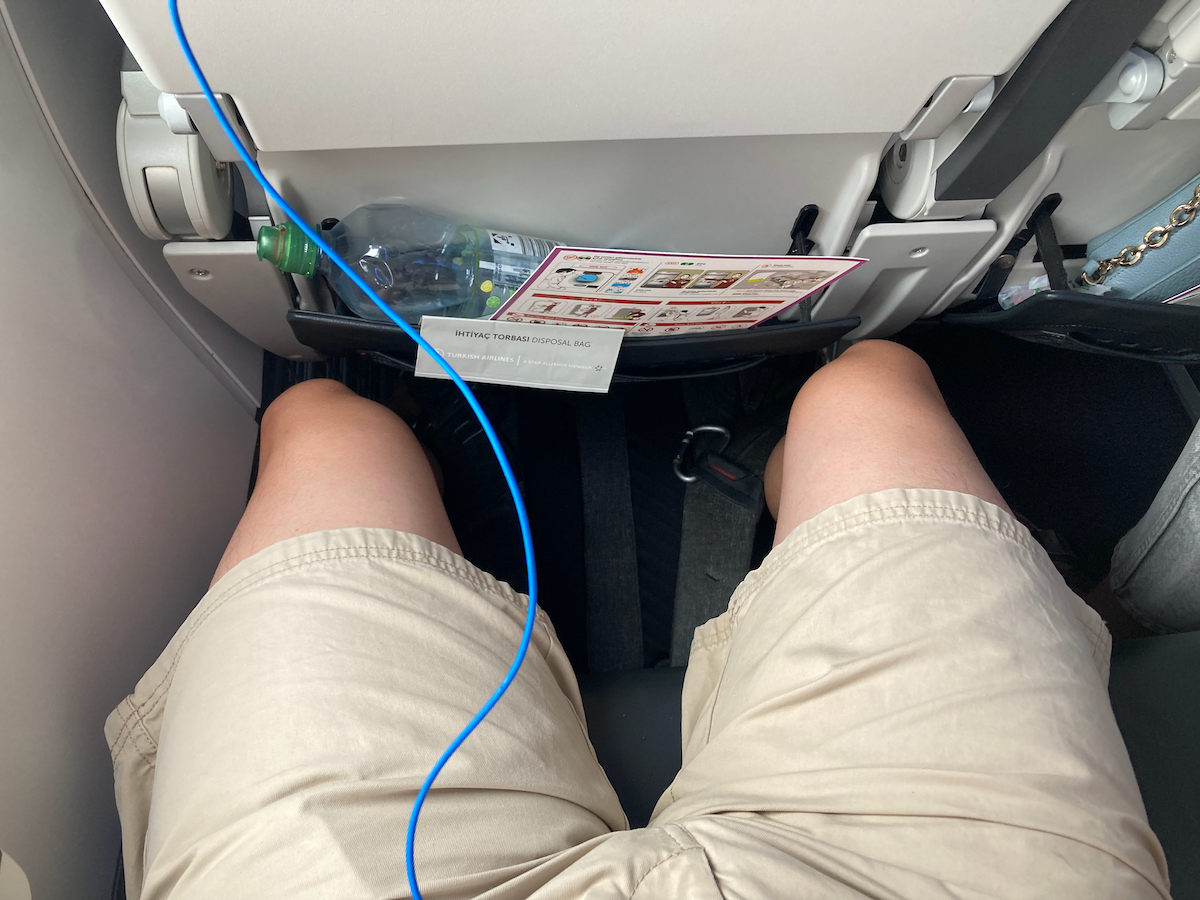
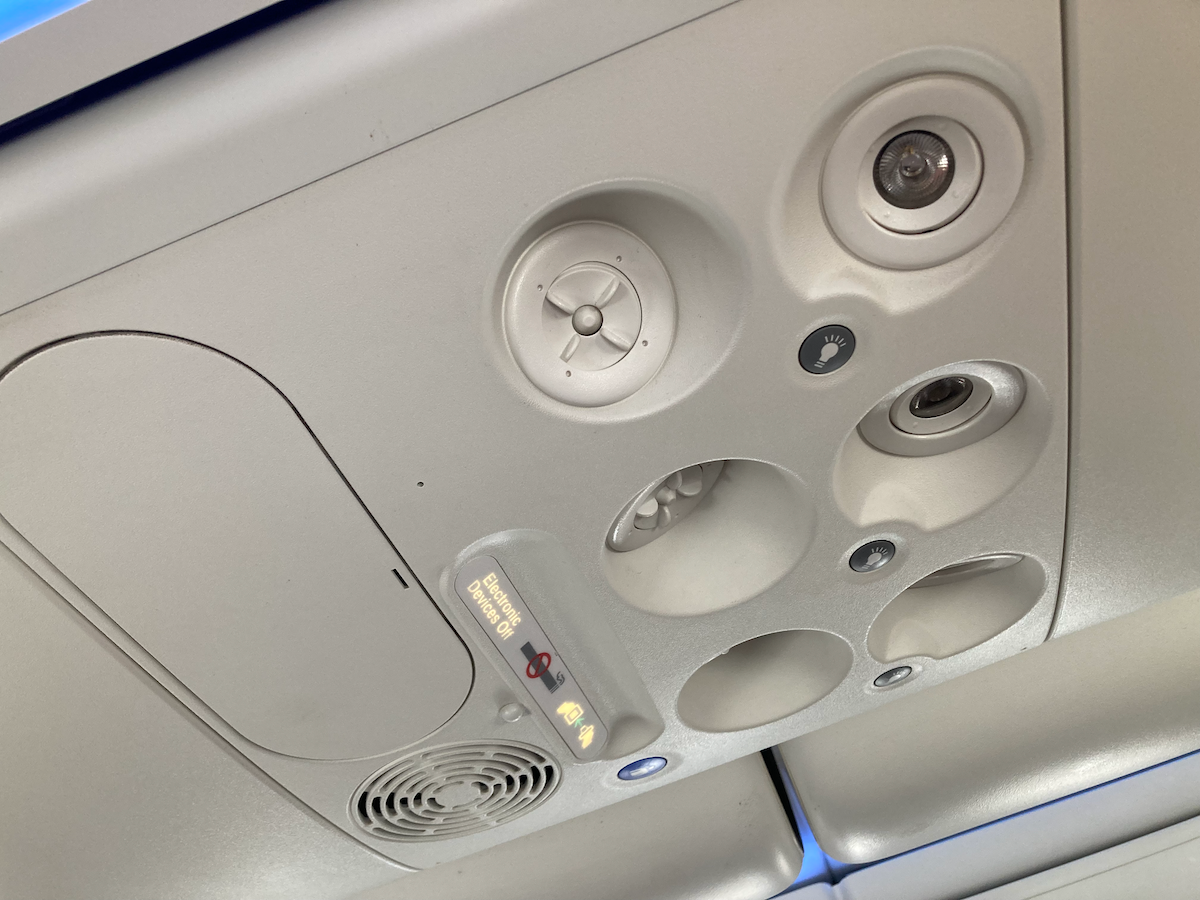
Inflight entertainment
The inflight entertainment was new, fast, and modern. The screens have the ability to tilt back and forth, allowing for better viewing for passengers of varying sizes - or when the person in front decides to recline their seat.
The system's audio comes via a two-prong audio jack, with Turkish Airlines providing earbuds. However, as I've found with these new systems, you can still use your own wired single-prong earphones/earbuds and get sound in both ears. The one other port that passengers will find is a USB-A port for device charging.
As for the content available on these systems, it seemed quite robust and diverse. From the latest movies and TV shows to music and games, passengers should be easily entertained for flights short and long. The airline's moving-map application was also fun to play around with.
One thing that I found annoying as a passenger was the number of disruptions after starting a movie. Not only is viewing paused for pilot and flight attendant announcements, but each Turkish Airlines flight also seems to have two adverts/commercials that run at the start of each flight. One of these is called "#HelloTürkiye" and seems to inform travelers that the country now wants to be referred to as Türkiye rather than Turkey. The video following it is a cinematic Morgan Freeman-narrated commercial meant to excite travelers with how Turkish Airlines connects the world. For a new traveler, these might be interesting to watch. However, for someone who has found a good movie to engage with on a two or three hour flight, these videos eat in to some precious viewing time!
Food and beverage
Food and beverage for this short flight was fantastic, and I feel like the airline does a great job with inflight meals and catering. With two options available, my wife and I agreed to get different dishes so that we could sample both. On this flight, the airline's economy meals were:
- Pasta with a creamy mushroom sauce and cherry tomatoes
- A beef patty on rice with a bean stew
Items that came standard (or were offered) with all meals were as follows:
- An appetizer that appeared to be some sort of eggplant dish with sour cream on top.
- A dessert. This was a mango mousse topped with chocolate shavings.
- A warm bread roll.
- Choice of beverage (soda, juice, beer, or wine)
I have to say that both main courses tasted great, as did the appetizer and dessert. Utensils were metal, which was also a nice touch.
Finally, it's also worth mentioning that after meals were finished and trays cleared, flight attendants came through the cabin with a coffee/tea service.
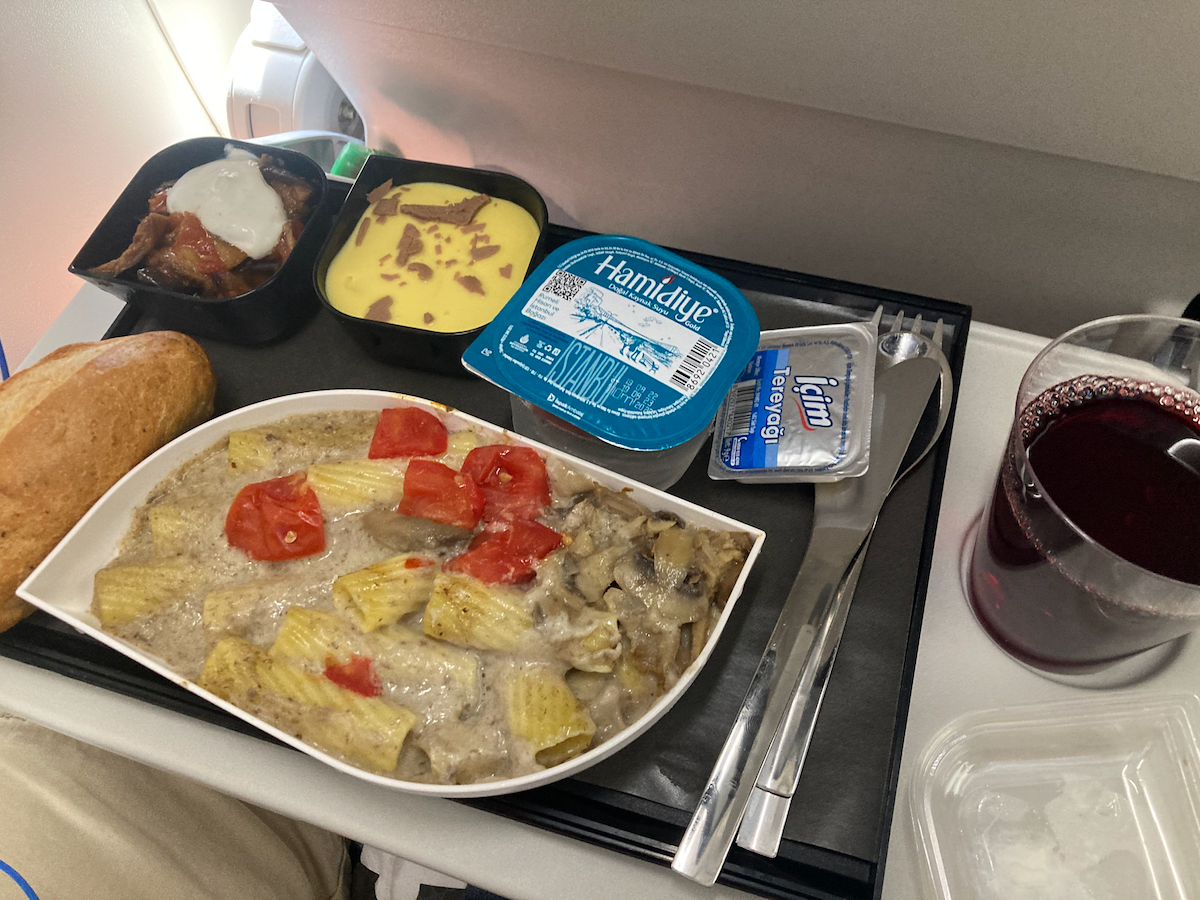
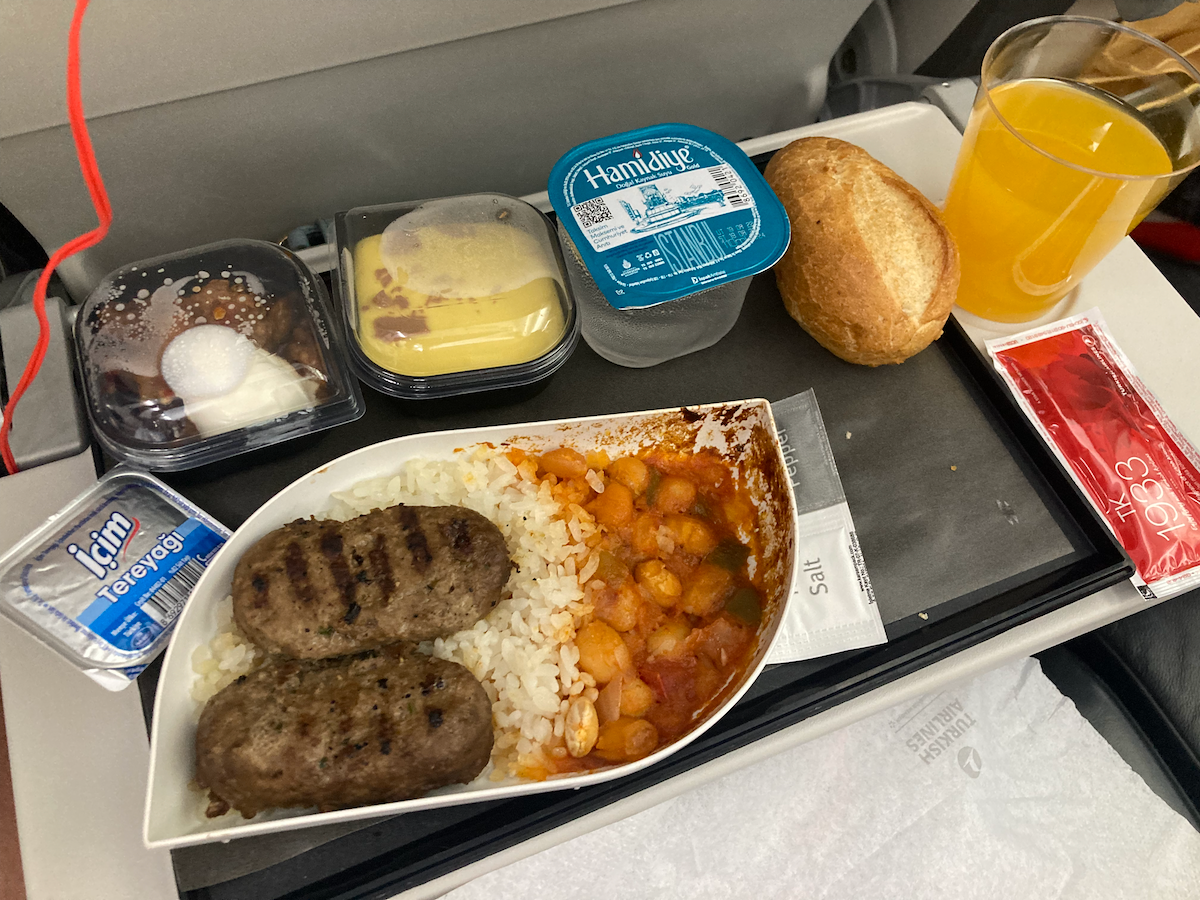
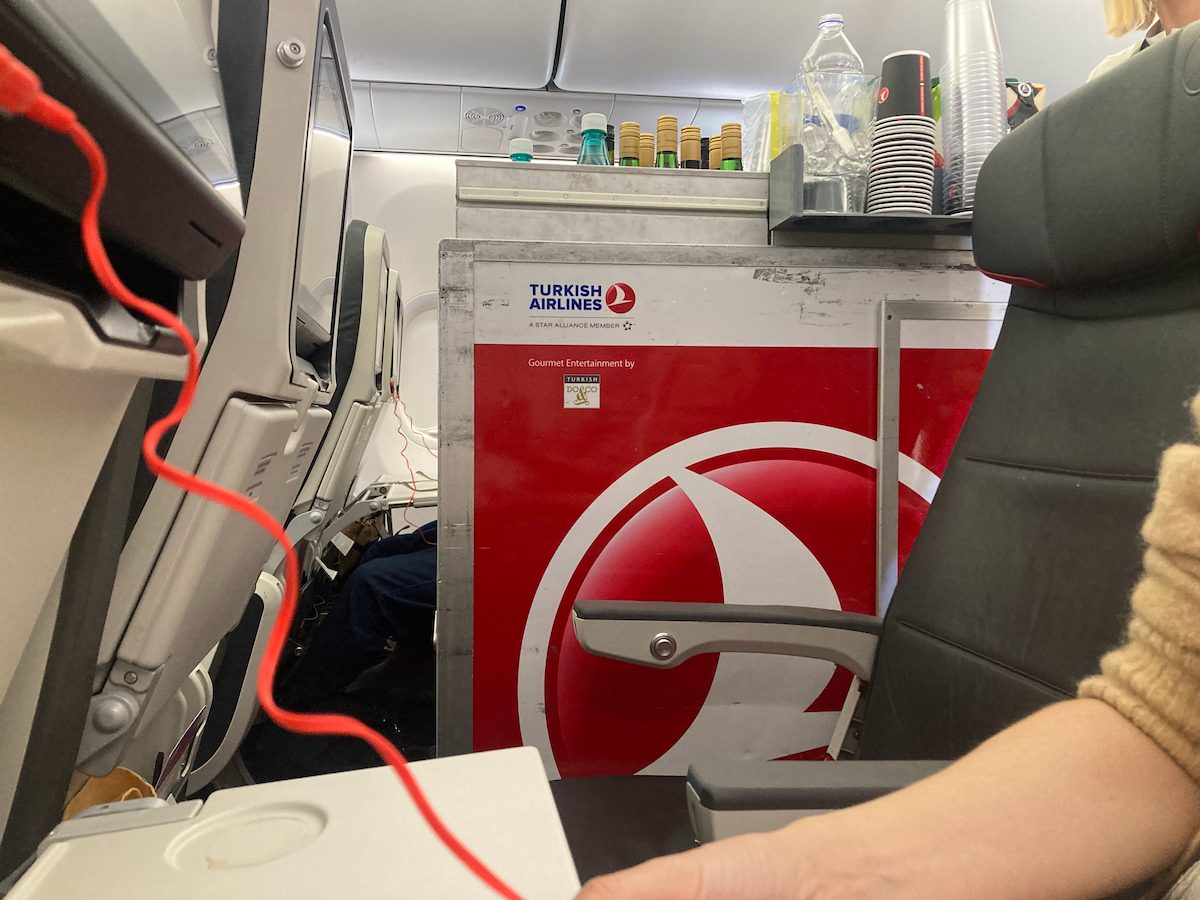
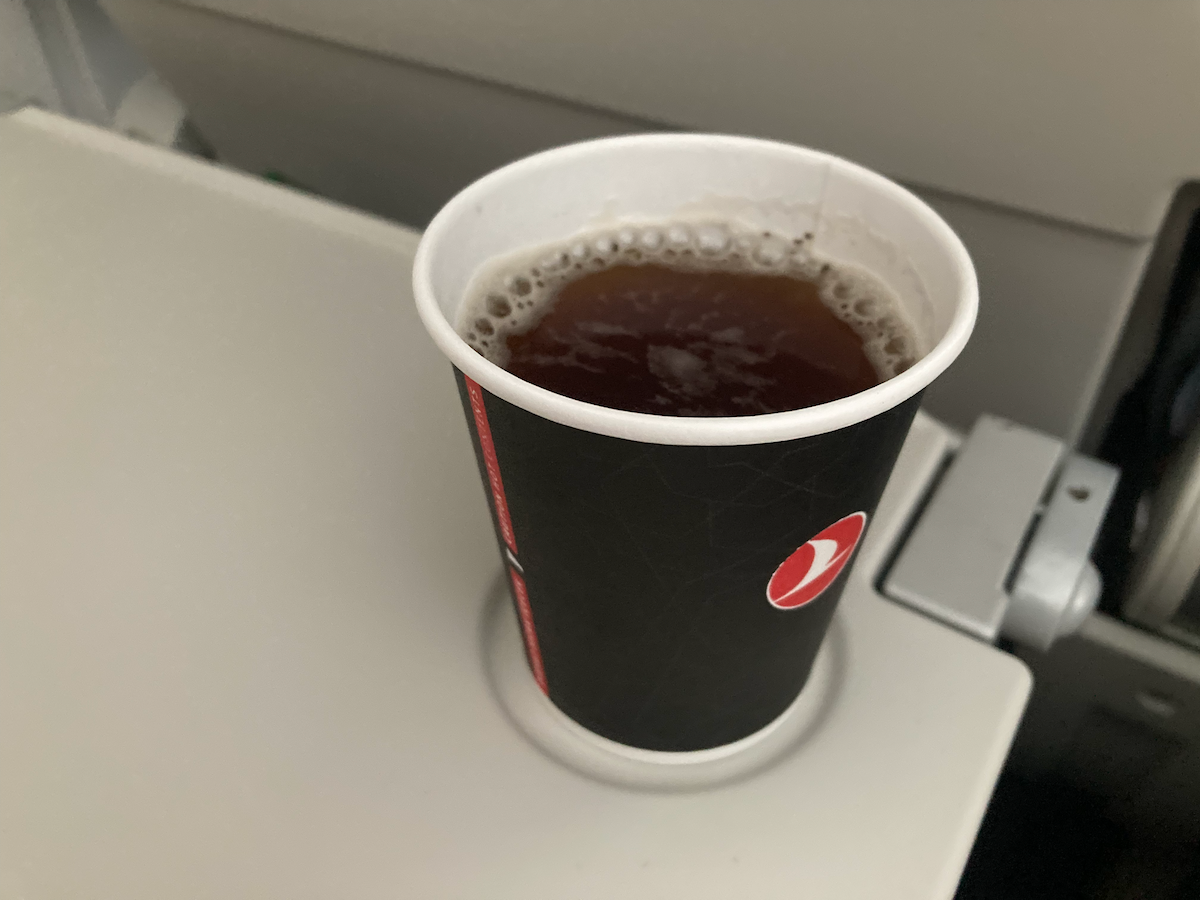
A few small quirks
While the entire flight experience was mostly positive, there were a few quirks that we noticed.
Close to the end of the flight, a message pops up on the screen notifying passengers that gate and connecting flight information is available. However, checking this section out on the system proved that this wasn't quite working as it was supposed to. I have found this to be the case on other airlines as well, and it seems like something that could be abandoned (unless they can get it working properly).
Additionally, the moving map also includes information on the aircraft. However, in this case, it was clear that the 737 variant listed was incorrect (image below). This particular point is, of course, insignificant and likely won't be noticed by many travelers.
Final thoughts
All in all, the experience of flying a short international flight in a Turkish Airlines narrowbody aircraft was fantastic - even in economy class. Indeed, this experience puts other airlines to shame - particularly European carriers operating longer narrowbody sectors and North American airlines operating from the US to Canada and vice versa.
Thus, if you're traveling to Türkiye from Europe and ticket prices are similar among other full-service airlines, then it would seem like the clear choice should be Turkish Airlines. Next week, I'll go over the experience of the second leg of the journey - flying from Istanbul to Bodrum on a Turkish Airlines Boeing 777-300ER. Stay tuned!
Have you flown on a Turkish Airlines 737 MAX yet? Share your own experience by leaving a comment.
Sources: Planespotters.net

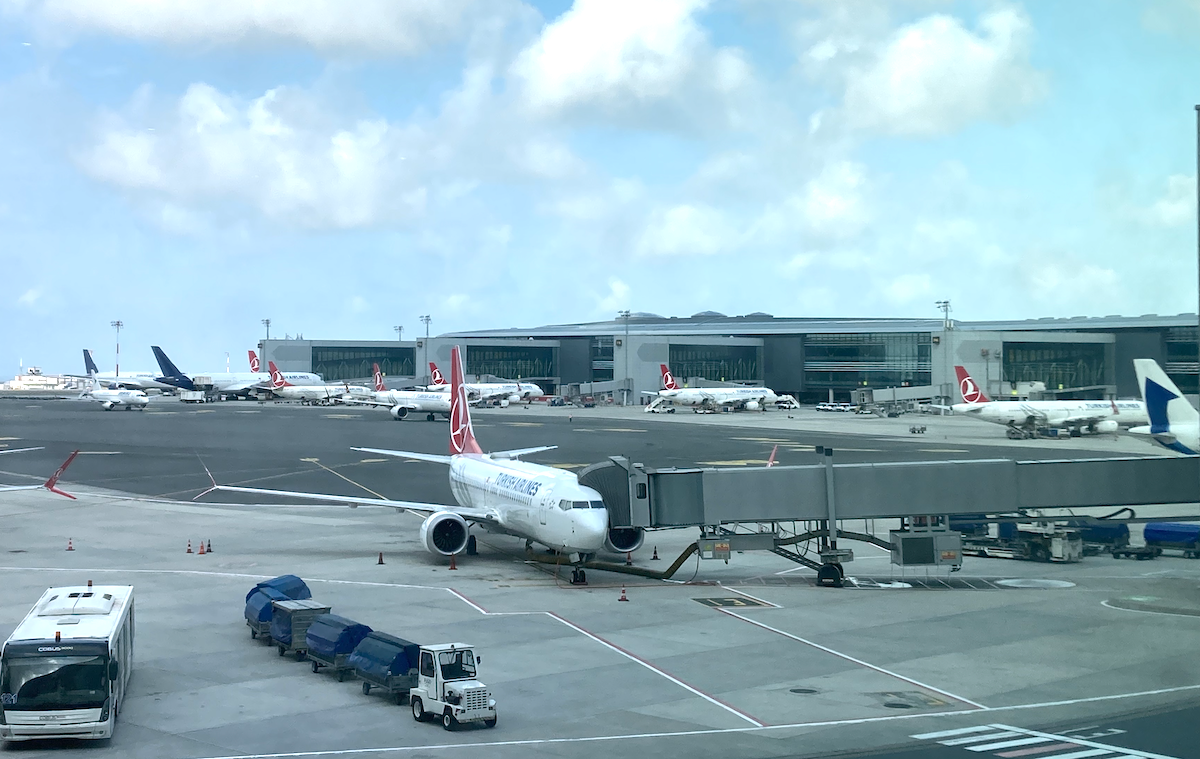

.jpeg)
